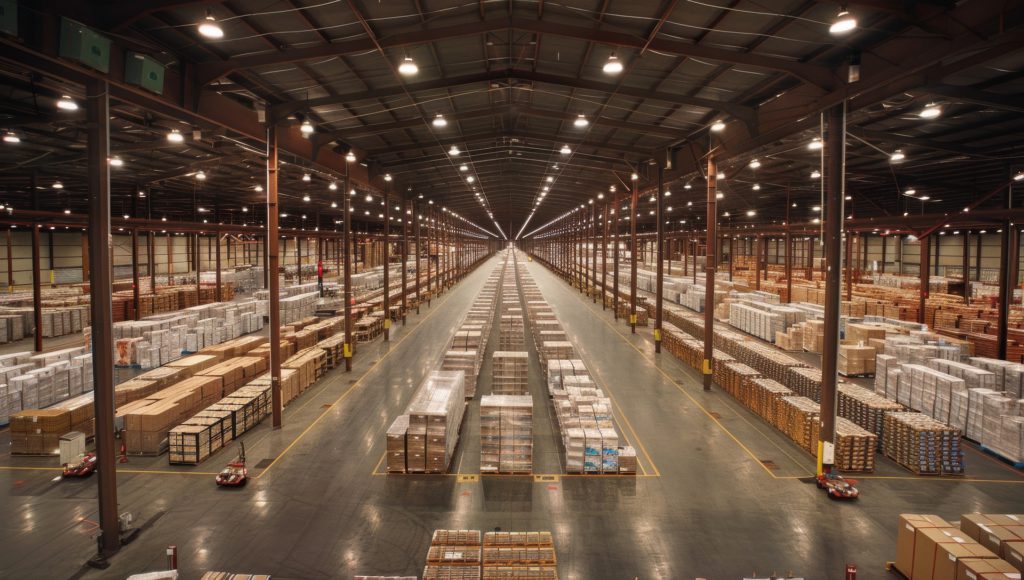
Licensed warehouse operators play a critical role in global supply chains, facilitating the storage and movement of goods. However, this essential function also makes them attractive targets for criminals seeking to launder money or engage in illicit activities. Understanding these risks and implementing robust Anti-Money Laundering and Countering the Financing of Terrorism (AML/CFT) measures is crucial for maintaining the integrity and security of warehouse operations.
The Dark Side of Warehousing: Exploitation Tactics Used for Money Laundering
- Storage of Illicit Goods
Warehouses can be misused to store illegal goods such as counterfeit products, narcotics, or stolen items. For instance, in a high-profile case in Europe in 2022, authorities discovered a warehouse filled with counterfeit luxury goods worth millions of euros. Criminals leverage the vast storage capabilities of warehouses to hide these goods, which can then be distributed and sold, generating illicit profits that are laundered through various financial channels. - Trade-Based Money Laundering (TBML)
One sophisticated money laundering topology involves trade-based money laundering, where false invoicing, over- or under-invoicing, and misrepresentation of goods or services are used to move money across borders. Warehouses play a pivotal role in this process, serving as nodes where goods are received, stored, and shipped, thus disguising the origins and destinations of illicit funds under the guise of legitimate trade. - Mixing Illegal with Legal Goods
Criminals often mix illicit goods with legitimate shipments, obscuring the origin of the contraband. For instance, in 2024, customs officials in the U.S. discovered two separate cases involving shipments of whey protein and celery, which contained hidden packages of narcotics. This money laundering method allows for the gradual introduction of illicit goods into the legitimate market, complicating tracking efforts. - Front Companies and Shell Entities
Criminals often establish front companies that appear legitimate but are primarily used to launder money. Similarly, shell companies—entities with no significant business operations—rent or purchase warehouses to create the illusion of a legitimate enterprise. - Asset Transfers
High-value items like art, precious metals, or luxury goods stored in warehouses can be transferred between entities as a means to move value without triggering suspicion. - Cash Transactions
Warehouses involved in cash-intensive businesses, such as logistics and freight forwarding, can be exploited to introduce large amounts of cash into the financial system. In one case in the U.S., a freight forwarding company was used to launder money by claiming large sums of cash as revenue from legitimate operations, thus integrating illicit money into the legitimate economy.
Goods with Higher Vulnerability to Money Laundering and Terrorist Financing Risks
Money laundering and terrorist financing activities span a wide range of goods. Through an examination of global money laundering typologies, 4 types of goods with heightened vulnerability to money laundering and terrorist financing have been identified, due to their ease of transferability, high liquidity, potential for value manipulation, and the ability to conceal the original source of funds. These goods include:
- Precious stones and precious metals
- Work of art (e.g. painting, sculptures)
- Antiques over 100 years
- Watches with case of precious metal or of metal clad with precious metal
Best Practices for Mitigating Money Laundering Risks for Warehouse Operators
Employing proactive measures is essential for effectively mitigating risks associated with money laundering and terrorist financing. From conducting thorough background checks on customers to performing due diligence, staying abreast of regulatory requirements, and establishing a robust internal AML/CFT framework, each action plays a pivotal role in fostering a secure operational setting. Here, we outline key steps for warehouse operators to adeptly navigate the intricate terrain of mitigating money laundering risks.
- Identify Your Customers and Transactions
Obtain and maintain information on identity of customers who deposited the goods in the warehouses, have control over the goods and are the beneficial ownership of the goods, as well as the value of the goods. This includes mapping out their network and conducting business reference check. - Conduct Due Diligence to Verify the Identity of Your Customers
Conduct screening on your customers of both companies and individual against official sanctions lists and publicly available databases to ensure they are not involved in illicit activities, or designated as a United Nations sanctions regime. If there are positive matches found in screening, file Suspicious Transactions Reports (STR) to the relevant authorities. - Perform Enhanced Due Diligence (EDD) for High-Risk Monitoring
For high-risk companies, geographies, and commodities, conduct Enhanced Due Diligence (EDD) to gain a deeper understanding of the risks involved. - Maintain Record Keeping of Anti-Money Laundering
Properly maintain the records and supporting documents throughout the customer identity verification process, and ensure these records and documents are available upon request by the authorities and regulators. - Ensure Regulatory Compliance
Staying ahead of regulatory requirements is crucial for avoiding penalties and maintaining operational legitimacy. Ensuring that warehouse operations comply with the latest AML/CFT regulations can significantly reduce the risk of legal and financial repercussions. For instance, in Singapore, Zero-GST warehouse licensees are required to implement mitigation measures against money laundering and terrorism financing risks when storing listed goods. - Balance Compliance and Efficiency
It is crucial to implement an effective in-house AML/CFT framework that aligns with operational and business requirements. This can be achieved by incorporating Anti-Money Laundering solutions, such as SentroWeb AML Screening System, to enhance efficiency and automation processes. With the consolidated databases of designated persons and entities and Politically Exposed Persons (PEPs), automated ongoing monitoring, and record keeping and report generation, warehouses can reduce the manual workload on staff and increases the efficiency of compliance efforts, allowing warehouse operators to focus on core business activities.
By implementing these measures, and regularly review and update your processes to stay ahead of emerging threats, you can significantly reduce the money laundering and terrorism financing risks in your operation, ensuring regulatory compliance and maintaining the trust and integrity of your business.
Recent Posts:
- AML/CFT Case Study: Money Laundering Through Gold Bars and Trade – Vulnerabilities and Risk Mitigation for DNFBPs
- Navigating AML/CTF Compliance in Australia: A Guide for Tranche 2 Entities Under the Amendment to the AML/CTF Act Effective 2026
- The New Corporate Service Providers Regulations and Guidelines: Top 3 Requirements and Compliance Steps CSP Need to Know



